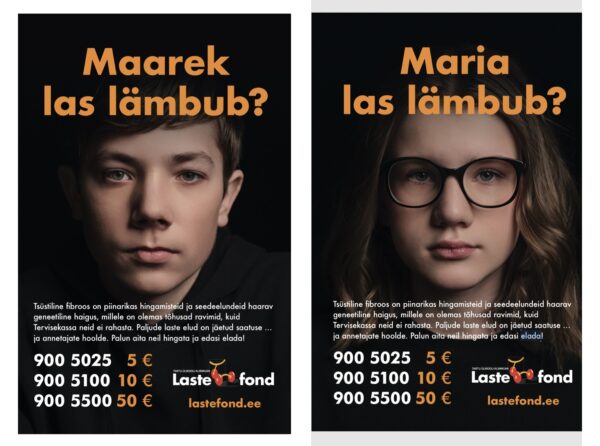
Unfortunately, their stories are just the beginning. In Estonia, there is an entire classroom, nearly 30 children and youth, who have been deprived of modern treatment and are literally suffocating as a result. Is this acceptable to us?
The University of Tartu Hospital Children’s Foundation is calling for attention and support in its 2024 main campaign for people suffering from a severe genetic disease, cystic fibrosis, whose only hope for modern, highly effective and lifesaving treatment now rests solely on donors. The Children’s Foundation is already supporting the treatment of 8 children and young people diagnosed with cystic fibrosis, whose conditions had become life-threatening at the beginning of this year.
15-year-old Maria, diagnosed at two years old and now spending most of her days in the hospital, barely attending school. She has already told her mother it might be time to start saying goodbyes…
14-year-old Maarek, also diagnosed in early childhood, is fighting increasingly recurrent severe infections and has already undergone several serious operations, the frequency of which will continue to grow without treatment…
But the disease is also seriously demanding a toll on 10-year-old Katre, 11-year-old Ksenia, 12-year-old Nora-Liisa, 15-year-old Aleksandr, 24-year-old Marie-Kristiin and 25-year-old Kaia. Kaia’s condition at the beginning of January was already so severe that doctors feared for the worst…
However, the MEDICINE to help all of them EXISTS, but unfortunately, the benefit of the drug, i.e., living and breathing, is not considered by the Health Insurance Fund to correlate with the cost requested for the drug. Why? Because the drug criteria, on which decisions are made, are more than 10 years old and the commission called last year to assess and change these criteria has only reached the realisation that the criteria are outdated.
Unfortunately, children and young people with severe genetic diseases do not have the time to simply wait for treatment for years. While with medication, they could live a full life, contributing as taxpayers to their own treatment, without it, they will soon become a very costly burden for the healthcare and social system. Not to mention the invaluable value – human life, which unfortunately ends prematurely without treatment.
The Children’s Foundation asks whether we agree that a classroom full of children in Estonia is doomed to suffocate because their treatment is too expensive? Are we okay with the idea that these children’s lives are not cost-effective enough? When does a child’s life become cost-effective? One thing is certain – no child’s treatment opportunity can or should be missed due to indecision – it’s within all of our power to collaborate and find solutions. Every child matters! Really matters!
